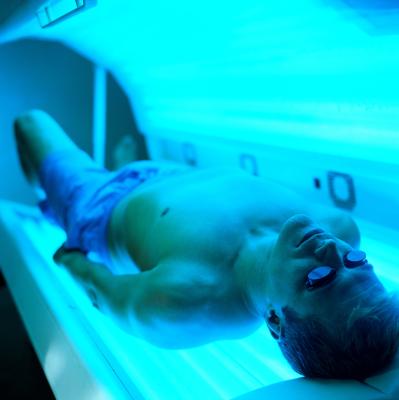When you go into a tanning salon, you have several tanning choices. Whether it is your first time using a tanning bed or you are have used them a lot, it is important to know the difference between tanning beds. You can choose a UVA only bed or a few different UVA and UVB beds, depending on your tanning goals. Does this Spark an idea?

UVA versus UVB
Ultraviolet rays are forms of radiation from the electromagnetic spectrum, or the light spectrum. Ultraviolet rays are not as long as visible light, so you do not know you are being exposed. UVA rays are long rays that penetrate deep into the skin. They are 320 to 400 nanometers. UVB rays are short rays that penetrate only the outer layers of skin. They range from 290 to 320 nanometers. Both UVA and UVB rays penetrate the atmosphere and react with your skin causing it to tan or burn.
UVA Only Beds
UVA bulbs cause the production of melanin from melanocyte cells, deepening the color of your skin. UVA tanning beds are comprised of 100 percent UVA bulbs. If you want to get a quick tan, the UVA only beds will give you a tan in only three to five visits of 20 minutes. UVA tanning beds are more expensive per minute, however. These beds maximize your color, but you should already have a good base tan before using these beds.
UVA and UVB Beds
Tanning beds that are mixed are typically 93 to 99 percent UVA bulbs and one to seven percent UVB bulbs. The addition of UVB wavelengths can cause sunburn. To get a tan in a UVA and UVB combination bed, you must visit three to five times per week for 20 minutes each. Although tanning beds give off three times more UVA rays than the sun, they reduce the UVB exposure by 40 percent, according to Elizabeth Carruth of Vanderbilt University.





